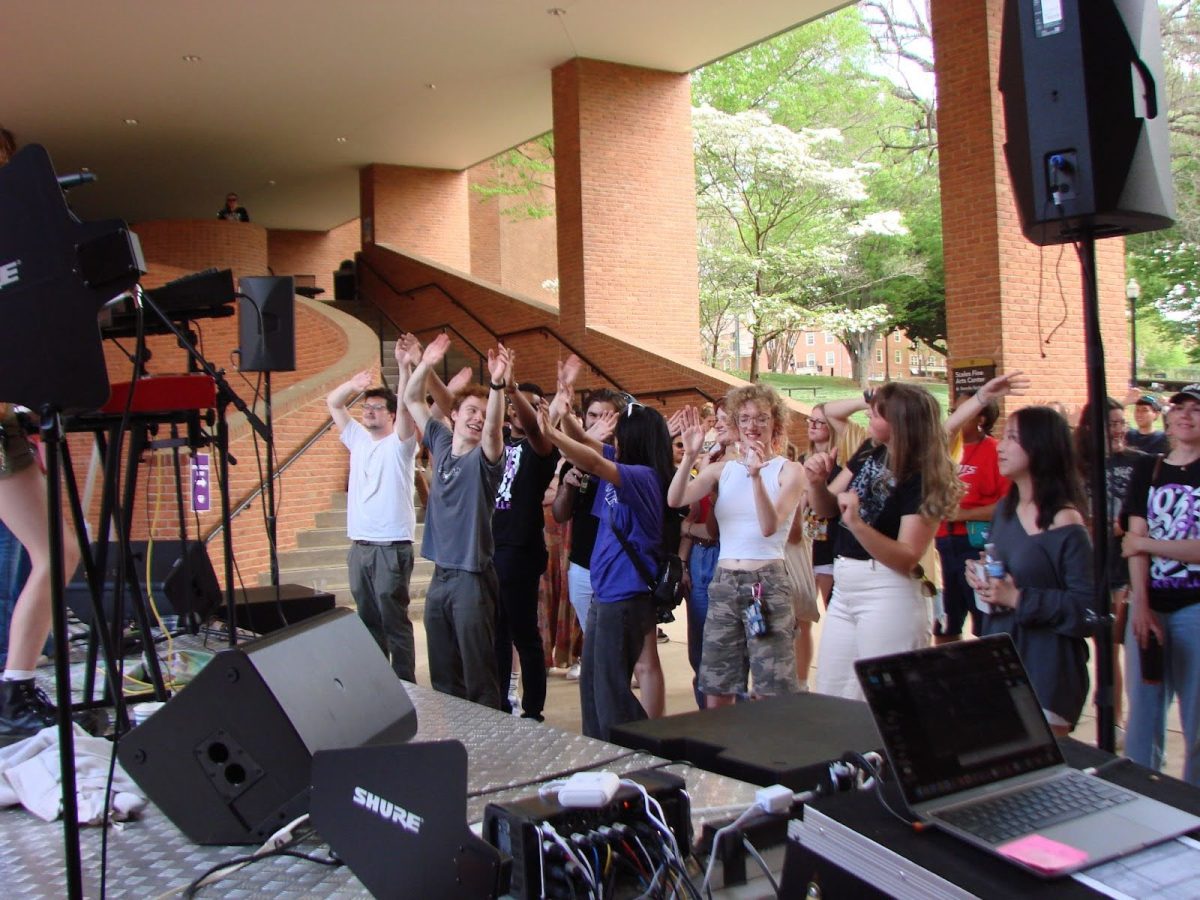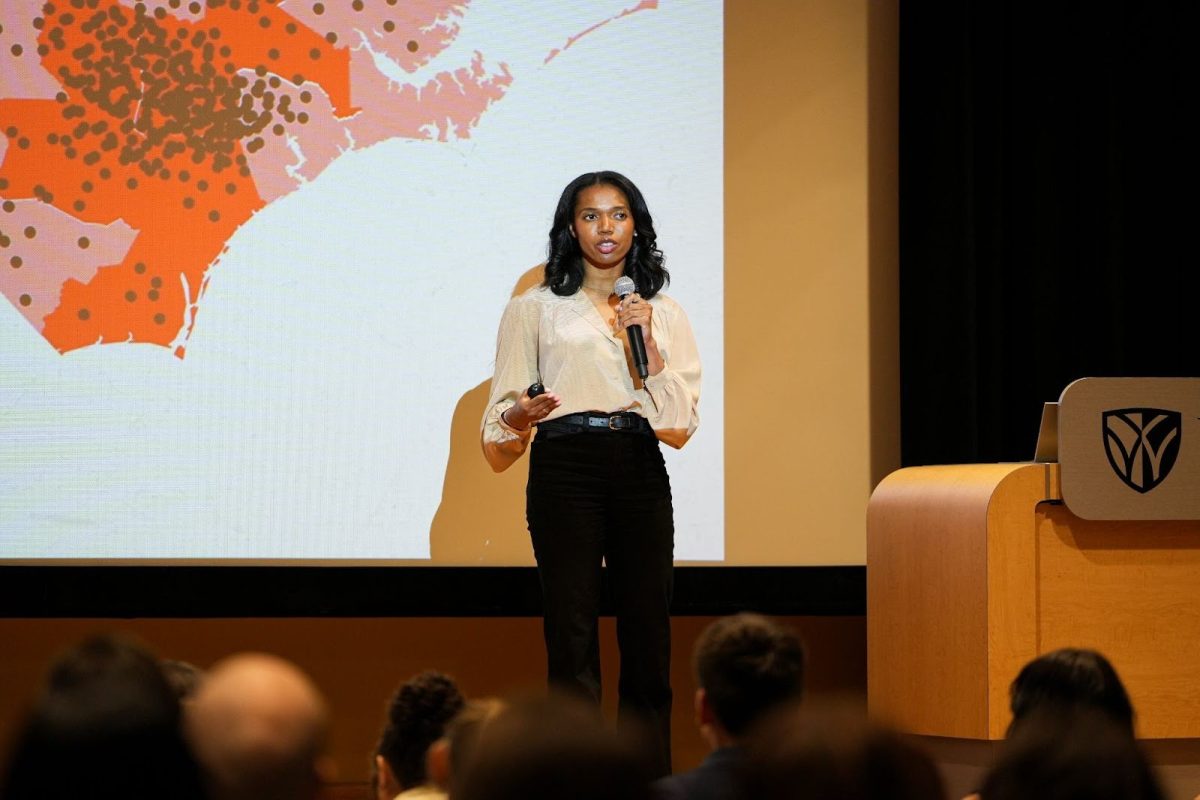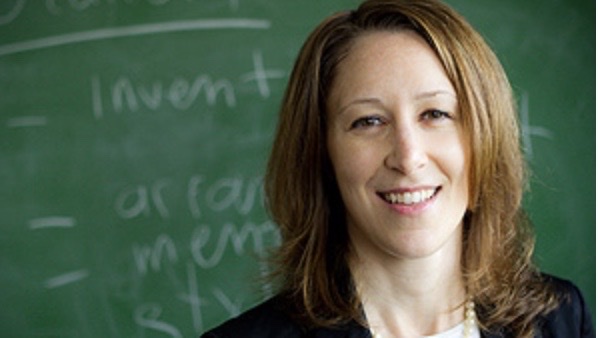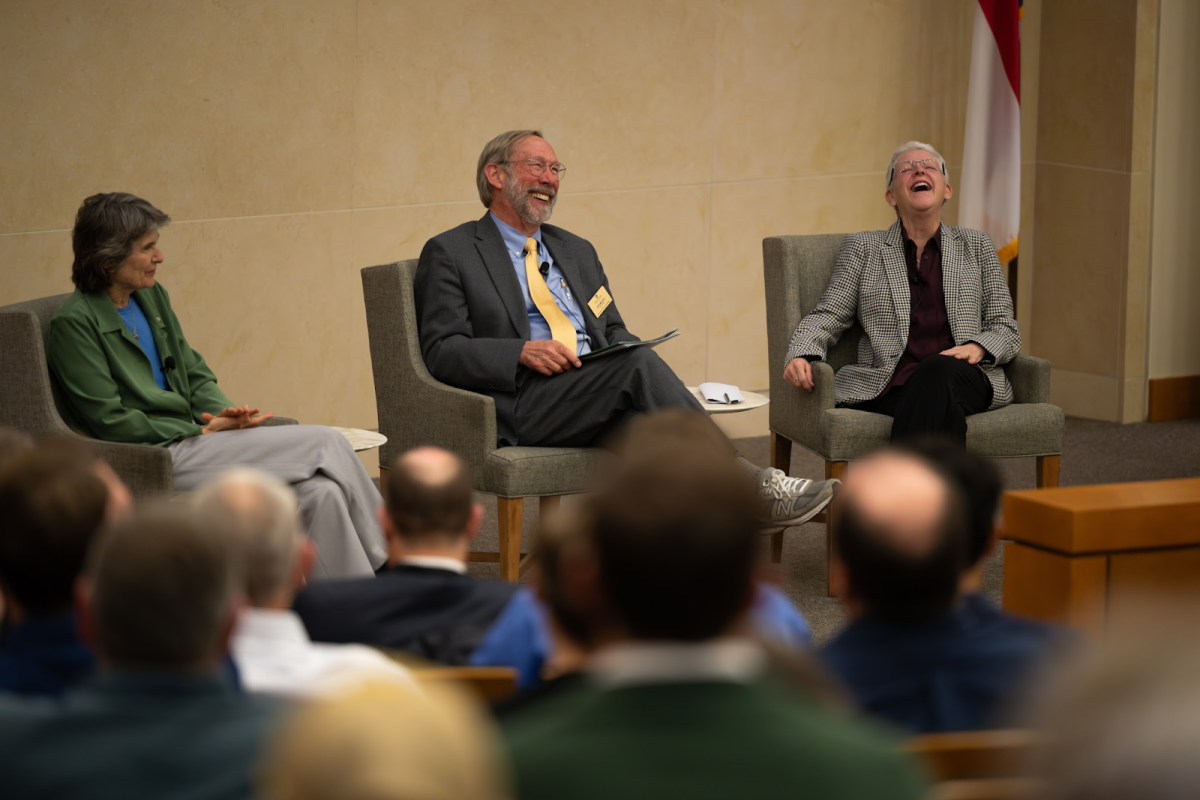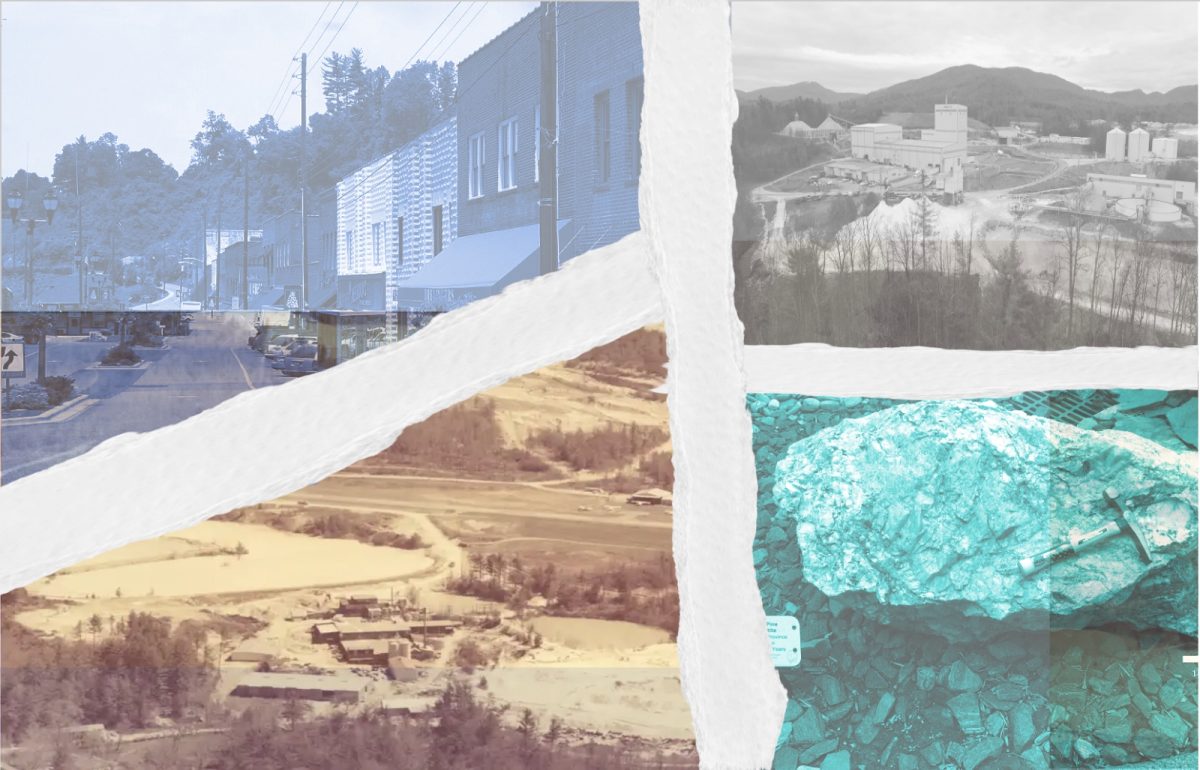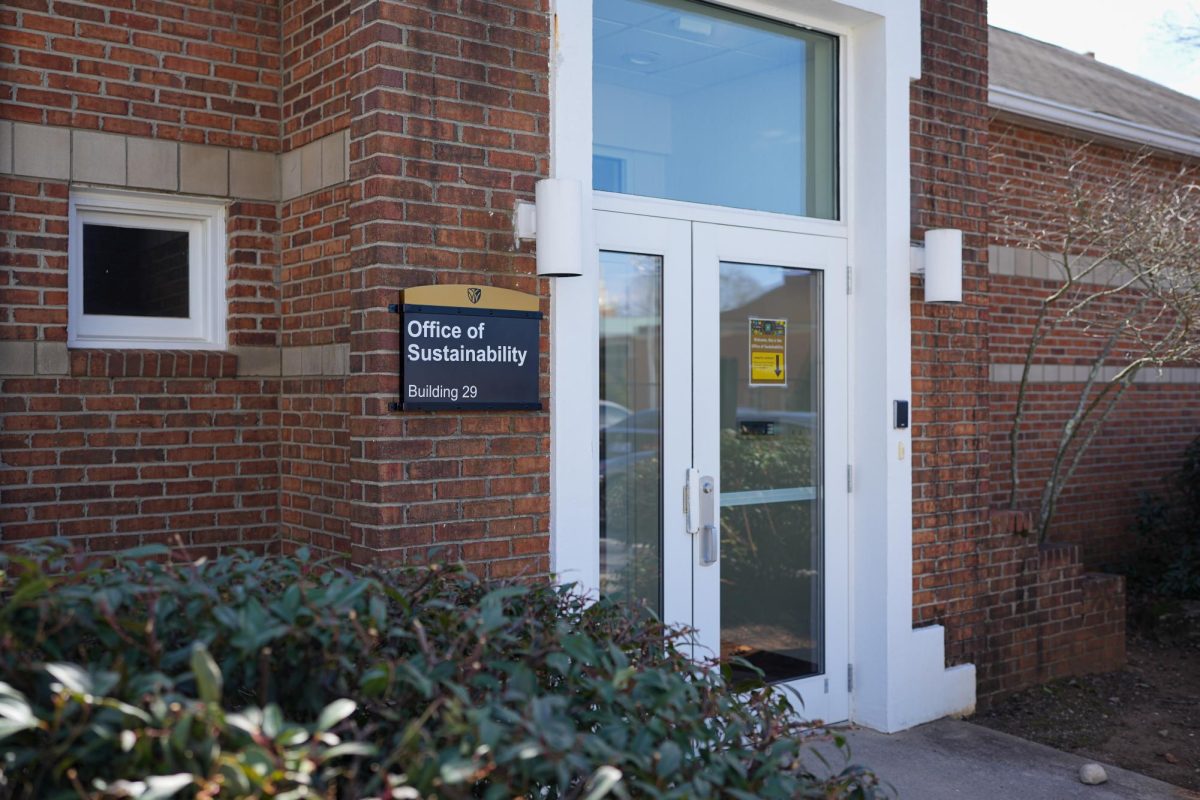On the windy Saturday afternoon, Scales Fine Arts Center pulsed with energy.
On Saturday, inside Scales, heaps of old clothes awaited their rebirth—soon to be claimed by new owners. At the heart of the gallery, among photographs, multimedia installations and paintings, a 60-foot red serpent sat coiled as an impressive art piece commanding the space with quiet intensity.
Many gathered outside around a long table, feasting on a spread of fruit platters and cookies. At their feet, a golden retriever puppy lounges in the middle of it all, basking in an overflow of affection. Beside Scales, the bare yellow earth lies open and raw, but three new pawpaw trees are about to take root.
This is Wakeville 2025, the third annual student-led, interdisciplinary arts festival at Wake Forest, with a new focus: sustainability. This year’s festival, co-directed by juniors Roksanna Keyvan and Jade Donahue, transformed the student-led arts festival into a green revolution.
“What became, as a once bold idea, a space where art in all forms could be shared and discovered, has now become something more powerful,” Keyvan said in her opening speech. “Today, Wakeville is not only a showcase of artistic talent, but also a testament to our collective responsibility to the world around us.”
This year’s Wakeville offered more than its usual art galleries—visitors explored student showcases, creative WakerSpace workshops and a free community closet stocked with donated clothes.
A highlight of the event was a ceremonial tree planting beside Scales. Three native pawpaw trees were planted in honor of Wakeville’s evolving mission and to reinforce Wake Forest’s longstanding commitment to environmental stewardship.
For 14 consecutive years, Wake Forest has been recognized by the Arbor Day Foundation as a Tree Campus Higher Education institution. The university’s Tree Advisory Committee continues to ensure that every tree removed is replaced, that native species are prioritized and that construction projects protect the roots of existing trees. The pawpaw trees replaced a once-beloved willow that stood in the same spot before naturally declining, marking a new start.
“This is not an act of labor, but of intention,” Keyvan said. “A symbolic commitment to the values we uphold at Wake Forest and to the future that we are building here together.”
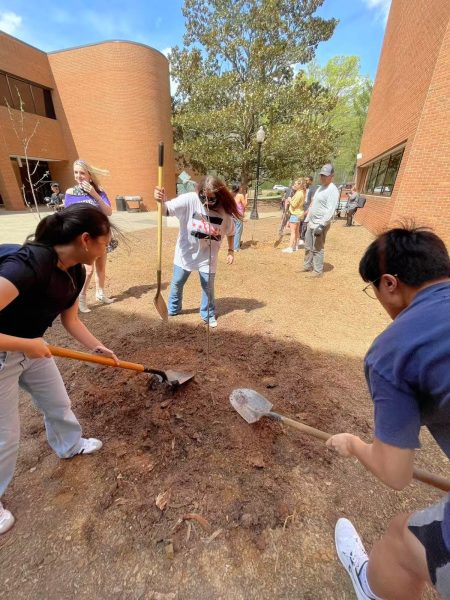
Keyvan, an Environmental and Social Justice major, emphasized that planting native trees like pawpaws at Wake Forest strengthens environmental and community connections. She said campus should be ready to welcome more butterflies since pawpaw leaves are the exclusive food source for the caterpillars of the Zebra Swallowtail butterfly.
She also highlighted that “it is essential to recognize the land which we gather upon today.” She acknowledged the Indigenous peoples who originally inhabited the land, specifically “the Sahra, Catawba, Cherokee, Lumbee in this location; the Shikori, the Eno, the Sisapaha and the Oconeechee in the original campus location.”
“With this acknowledgement, we ground ourselves in the history of this land, understanding that sustainability is not just about what we plant, but also about how we honor, protect and learn from the past,” Keyvan said.
Yiyi Bai, one of Wakeville’s Arts Leads, shared that their main responsibilities included designing on-site activities, designing the event posters and flyers, recruiting student artists and setting up the venue. They also helped guide the audience to the interactive sustainability-themed activities, such as upcycling, which involves “making trash into art.”
They also supported student artists by encouraging submissions and showcasing works from various disciplines, including visual art, theater and music. This year’s Wakeville theme centered on sustainability, though some performances—like band or drama pieces—explored broader creative expressions.
When asked why she took the initiative to join the event, Bai said she was driven by her passion for art—but even more so by this year’s meaningful theme of environmental protection.
Described by Keyvan in one word—“interdisciplinary”—Wakeville incorporates cultures, media and causes. “He’s from Germany and he’s from France,” she said, gesturing toward friends DJing on site. She stressed that “art is so much more than just visual art. It’s like theater, it’s performance, it’s sound, it’s anything that really makes you just enjoy life and create. So any medium for creation, we invite them to Wakeville.”



